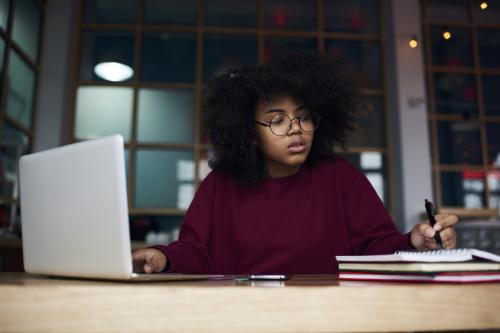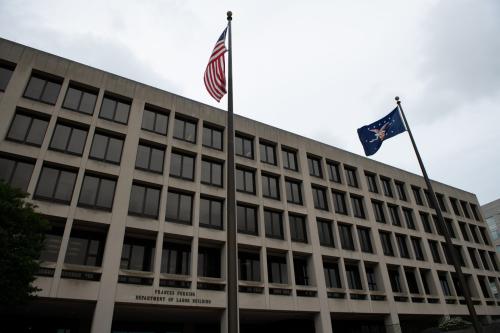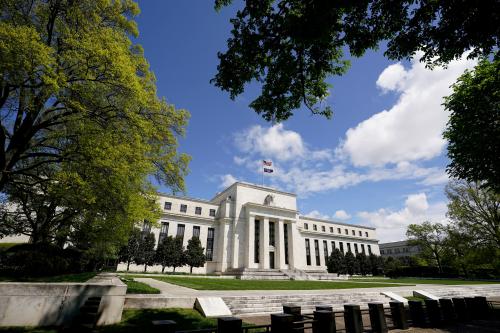The Bureau of Labor Statistics’ August jobs report, released September 3, showed a slight decrease in the U.S. unemployment rate, but an increase in unemployment for Black workers, who have consistently had the highest unemployment rate. The increase in unemployment for Black workers reflects their increased labor force participation rate (the number of adults either employed or actively looking for work) after previous months’ declines. Although the Black unemployment rate increased in August, because that increase largely reflected labor force participation dynamics, the total number of employed Black workers increased in August—but not at the rate of other workers.
So far, monthly job growth in 2021 has averaged 586,000. But in August, total nonfarm payroll employment only increased by 235,000, and the unemployment rate declined by just 0.2 percentage points, to 5.2%.


Table 2 shows the U.S. unemployment rate by race, gender, and age from August 2020 to August 2021. The unemployment rate for white women and men over the age of 20 decreased in August but increased for white teens ages 16 to 19. The unemployment rate increased for all three groups of Black workers, with Black teens experiencing the highest unemployment rate, at 17.9%—the highest it has been since April 2021. Black teens have had the highest average unemployment rate over the 13-month period between August 2020 and August 2021 (18.32%), compared to 16.32% for Latino or Hispanic teens and 12% for white teens.
Latino or Hispanic workers over the age of 20 saw a decrease in their unemployment rate in August, while the unemployment rate for Latino or Hispanic teens ages 16 to 19 increased to 15%, from 10.8% in July.


As cases of the Delta variant of COVID-19 continue to increase, many workers who are able to telework continue to work from home rather than returning to in-person employment. But the ability to telework varies by race and ethnicity, with Black and Latino or Hispanic workers less likely to be able to telework.
In May 2020, the Bureau of Labor Statistics added questions to the Current Population Survey to gauge the impact of the pandemic on the labor market, including data on employed people who teleworked at some point in the past four weeks specifically because of the pandemic. That month, 35.4% of workers age 16 or older teleworked. Among white workers, 35.3% teleworked, compared to 51.9% of Asian American workers, 29.3% of Black workers, and 23% of Latino or Hispanic workers.
Since then, as businesses have reopened, the percentage of workers who teleworked due to the pandemic has decreased. In August 2021, 13.4% of workers age 16 or older teleworked. Of those workers, 12.4% were white, 11.2% were Black, 30.4% were Asian American, and 7.9% were Latino or Hispanic. Throughout the pandemic, Black and Latino or Hispanic workers have had fewer opportunities to telework, as they are overrepresented in essential, customer-facing occupations that cannot be done remotely and put them at higher risk of contracting COVID-19.
Further, the Supreme Court’s August 26 rejection of the Biden administration’s latest eviction moratorium will mean that fewer workers—particularly Black workers and families, who are more likely to experience an eviction—have a place to live, let alone work. Academic research has shown a connection between housing and employment security: A 2016 study found that among families with a median household income of $25,003, “approximately 42 of the renters who had lost their job during the years prior to being surveyed also had been removed from their homes” and that “the likelihood that a worker will lose his or her job is an estimated 11 to 22 percentage points higher for individuals who have been forced out of their home compared to those who have not.”
Making things worse, the federal pandemic unemployment benefits program, which financially supported households throughout COVID-19, ended on September 4, leaving millions of Americans without income support.
As of September 2, the Centers for Disease Control and Prevention reported that 74.5% of adults had received at least one dose of the COVID-19 vaccine. Of the 58.6% of people who received at least one vaccine dose and for whom race and ethnicity was known, 60.5% were white, 10.3% were Black, 17.2% were Latino or Hispanic, 6.2% were Asian American, and 1.1% were Native American. And though Black people represent 13.4% of the U.S. population, they represent around 15% of COVID-19-related deaths.
With increased cases and deaths from COVID-19 and higher unemployment numbers for Black workers, now is the worst time to end unemployment benefits and eviction protections for workers and families.
The Brookings Institution is committed to quality, independence, and impact.
We are supported by a diverse array of funders. In line with our values and policies, each Brookings publication represents the sole views of its author(s).





Commentary
August’s jobs report shows higher unemployment for Black workers, just as jobless benefits and eviction protections end
September 8, 2021